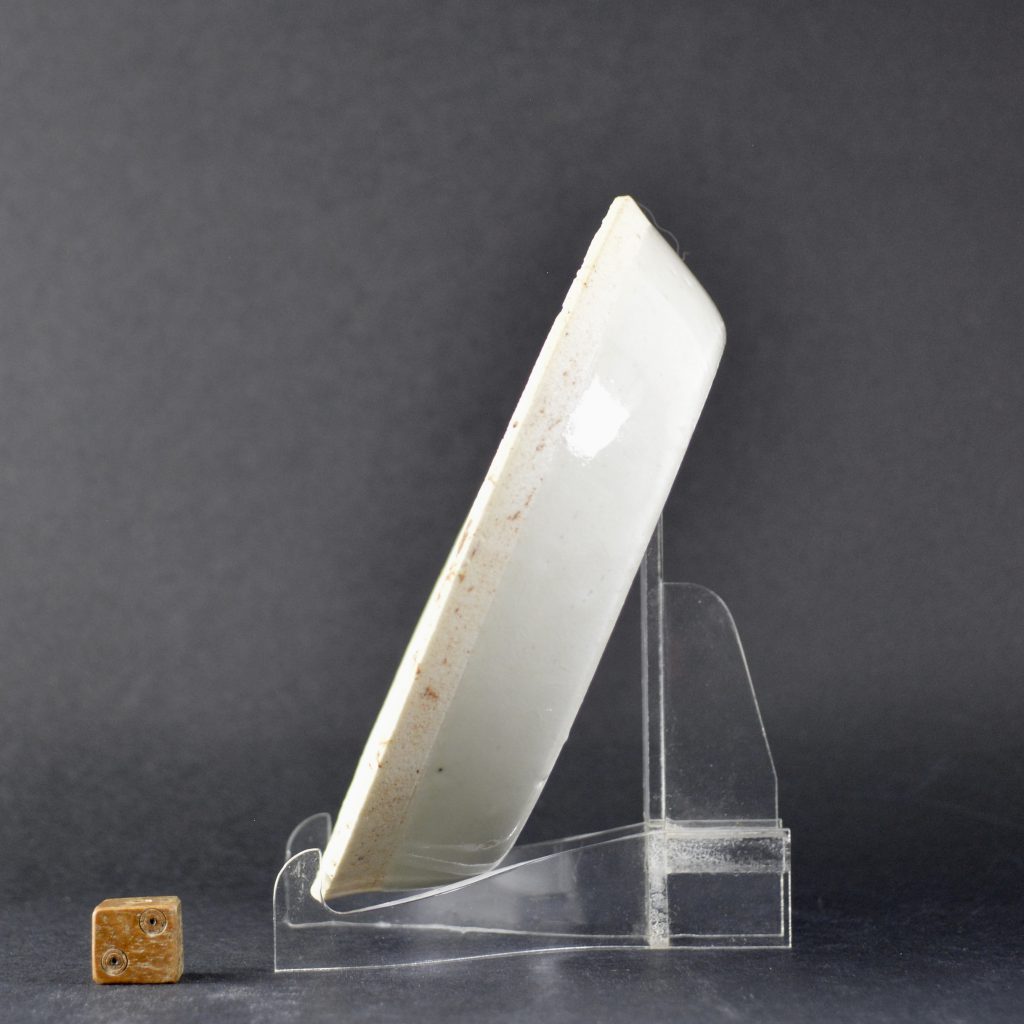
Qingbai Porcelain Shallow Dish, Southern Song Dynasty
A Small Song Qingbai Porcelain Shallow Dish, Probably Jingdezhen Kilns, Jianxi Province, Southern Song Dynasty 1127 -1279. This lightly potted shallow Qingbai porcelain dish is carved and combed with what might be flowering peony. The rim is unglazed. Qingbai porcelain bowls and dishes of this type were fired on their rims, therefore the glaze needed to wiped off. After firing the unglazed rim was normally bound in metal, this rarely survives, if it does it in normally in a decayed fragmentary condition.
SOLD
- Condition
- In excellent condition. Minor encrustion left by the orginal metal band on the rim. Minor uneveness or minute chips to the rim.
- Size
- Diameter 12.5 cm (4 3/4 inches).
- Provenance
- From a Private English Collection of Early Chinese Ceramics.
- Stock number
- 24935
Information
Qingbai Ware :
The earliest known qingbai wares were produced in Jingdezhen in Jiangxi province around the late 10th century and are characterized by faint pale-blue glazes on low, wide forms. Qingbai continued to be enormously popular and highly produced throughout the Song dynasty (960-1279) and was prevalent in the Yuan dynasty (1279-1368), but slackened during the Ming dynasty (1368-1644) until being replaced by tianbai, ‘sweet white’ ware. The initial forms of qingbai were simple bowls and dishes, but by the mid-Northern Song the forms had advanced to include a wide variety of objects used for daily life such as ewers, boxes, incense burners, granary models, vases, jars, sculptures, cups, cupstands, water droppers, lamps, grave wares, and tools for writing and painting. The precedent for the majority of these forms is found in earlier metalwork and lacquer and Rawson has suggested that the imitation of silver was the primary force behind the production of white wares, including qingbai. See our `History` section for more information about Song Porcelain and Stoneware by Mindy M. McDonald.








